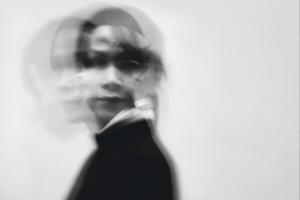After being awarded the prestigious Prix du Jury by the Salon des Beaux Arts for her photographic series ‘Different Shades of Yellow’, the critically acclaimed artist Misia-O’ has unveiled ‘Different Shades of White’ at Les Rencontres d’Arles to 25 September 2021.
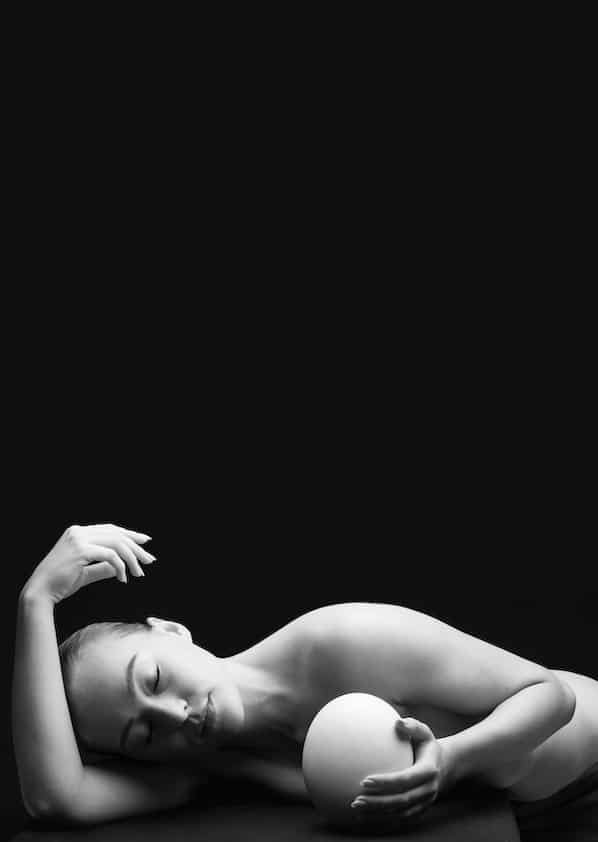
‘Different Shades of White’ is the 3rd suite of photographs in a series in which the artist explores identity and challenges the stereotypes and perceptions relating to different skin tones, seeking a global vision of identity and unification through her photography. Misia-O’ explores the essence of our being through the ‘Different Shades’ series, inspired by humanist philosophy and an interest in the incredible architecture of our genes. Misia-O’ explains: “It’s much more than our skin colour that defines us, it’s our sacred geometry’.
Lee Sharrock: How did you come up with the concept for your ‘Different shades of…’ series to begin with, and how many series do you plan to photograph?
Misia-O’: ‘Different Shades Of…’ was inspired by my gorgeous model, Maia, in 2018. I started shooting her beautiful features and dark skin showing different hues of colours in the infamous beautiful light of the South of France. The first picture “Diver” was shot against an orange wall with the daylight as sole light. I love this picture as the blue tones on her skin were not added in postproduction: they are created solely by the daylight. I matched that colour with a small blue flower I found in a field and put it on her skin to show the colour parallel found in nature.
After observing society’s perception and misplaced stereotypes when it comes to “skin colours”, I wanted to show the absurdity not only of stereotypes but mostly the actual falseness of our perception of “skin colours”. Not by becoming a political activist but instead by leveraging my research in science, humanist philosophy, the arts and literature. There is no such thing as skin colour in science and biology: be it black, yellow or white skin colour, like “races” (we all come from a few major ethnic groups with similar genes that migrated many times over and adapted to various climates by developing a morphology adapted to survive each climate). Race and colour are a human construct with no basis in science, translated with very simplistic and wrong interpretations. Light frequencies dictate what a colour and non-colour may be, and affect the actual hues when the light changes. Hence ‘Different Shades of…’ showing the variants in each presumed colour: ‘Black’ is anything but black, ‘Yellow’ is anything but yellow, and ‘White’ is anything but white etc. The play on light reveals the interchangeability of the nominated colours where, for example, yellow becomes white, black becomes blue and white becomes brown. I researched the theory of colours in art, literature and quantum physics, and came across the trichromatic theory showing that light frequencies effectively affect our perception of colours and non-colours, and dictate what our retinas perceive. This research led to my ‘Different Shades of..’ series.
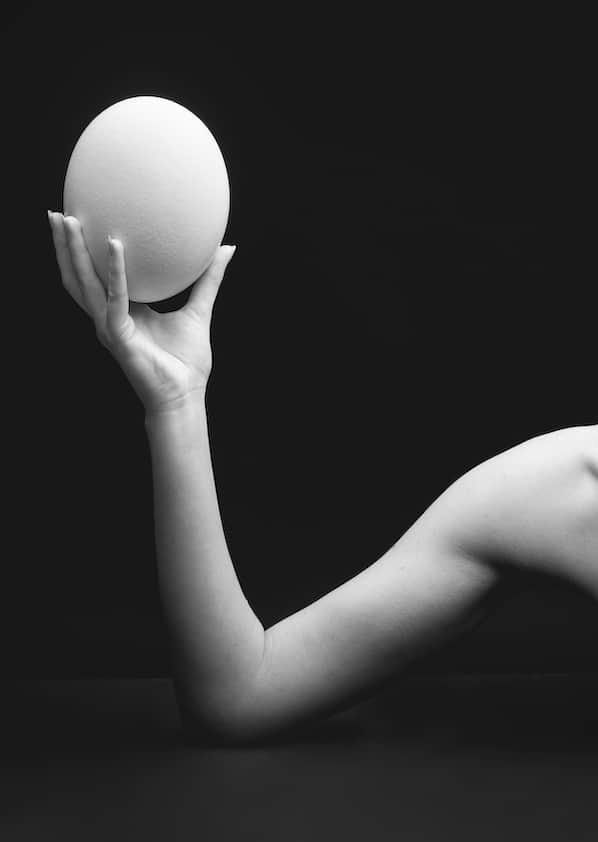
What camera and process do you use, and do you shoot everything in a studio?
I use different cameras, but what truly matters is how I work with light. This is the core of my work and research. Light equates photography. In my previous career as an Interior Architect I won the UK Design Award for my lighting scheme. I have always been fascinated by the power of the light, how it regulates our lives, how it has been used by painters such as Rembrandt, the play of light where you see and do not see, the impact it has on moods, colours, natural rhythms etc. The South of France – especially Arles, the city of Van Gogh and many artists – was chosen by them because of the stunning nature of the light. The ‘mother light’ as Michael King put it. Insofar as the locations of my shoots are concerned, for ‘Different Shades Of…’ I chose to shoot my muses and still life mostly in the studio.
You’ve mentioned that you spend a lot of time researching each series. What is the starting point for the research?
I always start with a concept. Once my concept is clear, I start researching it: I go to museums, consult art books, read books and essays on the subject, research the subject in philosophy, in literature, in science. I then discuss it in depth with my parents and my family (my Mother and Father are both academics). We always have massive conversations and debates on culture, science, literature and it opens new ideas, I discover new references, which I then research further. It’s a family affair! Once this whole body of research is done, I organise it in notebooks and sketchbooks and start planning the various sequences of my series. Only then do I start searching for my muse and the still life I want to add to the portrait, to echo the concept and the physics and origins of my chosen muse.
For example, for ‘Different Shades of Black’, I used exotic bird feathers sourced from Africa as still life. They showed a spirituality, innocence, purity and the many colours and diversity nature gifts us with. And we are part of that very nature. For ‘Different Shades Of Yellow’ I used orchids (green and red = yellow). The orchids represent a zenitude, serenity and delicacy associated with the culture of certain Asian countries. They echoed the poetry of my muse ‘Different Shades of White’ is mineral: from Ostrich eggs to the use of shell skeletons, I wanted to celebrate the way the female form echoes the principles of Phi and sacred geometry. Ultimately we each are designed with sacred geometry and its divine proportions, our very genes and atoms are made of an incredibly complex architecture that differentiates us from flora, fauna and minerals, and unifies us as one: our very humanity.

How do you cast your models and direct them during the photo shoots?
I guess because my photographic work is conceptual and not about fashion, I do not need to go through model agencies. However, my muses come to me at the right time quite by chance. I cannot shoot this humanist subject if I do not have a proper human connection with my models – it becomes a collaborative work. So I guess one could say it is about creating a relationship which enables me to understand them, and to remain authentic to their very essence. Which is fundamental to me. The poses come naturally as they are not forced upon them, but instead evolve effortlessly with their natural gestures as I guide them. It is important to say that as far as I am concerned, my shoots are the result of teamwork. Everybody is on the same page and on the same level: my fabulous assistant, my talented hair and makeup artist, my model, and also my fine art printer. It takes all those experts to make a shoot successful and cohesive. It takes like-minded people with similar values and humanity to understand the concepts of ‘Different Shades Of…’, and add its own creative interpretation (cohesive to my creative direction) to the shoot. I always welcome creative ideas from my team. Together as a team we represent a large section of the very same human diversity we celebrate.
You talk about ‘Divine architecture’ and quantum mechanics. How do these concepts relate to photography and still life?
As an artist, you are inspired by your own values, experiences and education. I grew up with a very inquisitive mind and fascination for humanity. This was encouraged by my education: my parents and grandparents are very literate and educated in science, philosophy, literature and the Arts. This was extremely important and lucky for me, as they could feed my never-ending thirst for understanding and knowledge. Quantum physics derived from my research on specific subjects (light and colours) and is part of a broader scope of research. When you start shooting the human form and elements of nature, be it a flower, a shell or a feather, you discover details the naked eye bypassed. Take a closer look at the very architecture of nature – it is so beautiful and spiritual, it’s humbling. Humbling to realise we are made of such a complex architecture we still do not comprehend fully. Humbling to see the exactitude and perfection of nature. Look at the logarithmic spiral of the shell skeleton. Look closely. You can see the perfection of its architecture. You can actually SEE the golden ratio. Our very atoms are made the same way. Divine architecture is undeniable when you look closely. And it is still unexplainable. So yes, insofar as life is concerned, human life and nature: our very shapes are designed and orchestrated in a perfect form. We are all part of this bigger design. To me, this is very spiritual and leaves no place for our little egos. In fact, when I shot the logarithmic spiral, I cried. Tears just started to flow as I was so moved by the absolute perfection and divine beauty I was witnessing. So humbling. All I could do was aim to translate it as best as I could by shooting it and bring it to the public to discover it in turn.
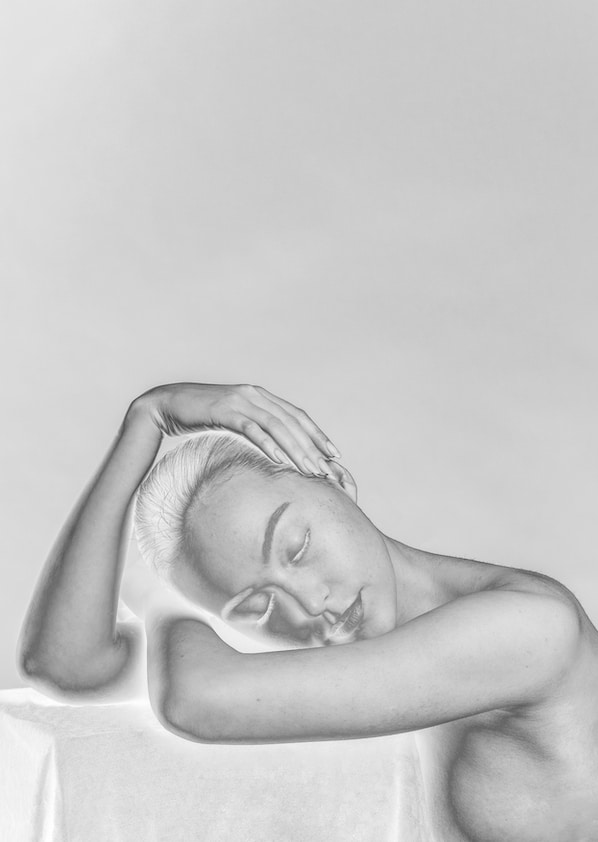
Your ‘Different shades of White’ series is influenced by Dadaism and Surrealism. How did you take these movements and reinterpret them for a contemporary audience?
“Surrealism reasserted the invincibility of artistic genius born in the mind’s unconscious.”
– Elizabeth Mansfield
When I was 8, my mother bought me a large art book on Surrealism and Dadaism. It featured various artists including; Dali, Magritte and Duchamp. Each painting was an enigmatic tale, and every time I went back to it I discovered a new detail and new symbols. Growing up, I started reading about the surrealist movement and discovered that it was related to the power of the unconscious and psychic automatic writings, grounded in Freudian psychology. But it also attributed the artistic genius solely to men. Placing women as muses with beautiful bodies used for artistic experimentation, not ever as artists in their own rights. A few women made it though, and became known as Surrealist artists, despite it all. They expressed their own aesthetics and psychic desires.
I started researching women Surrealists and discovered Lee Miller, catalogued as Man Ray’s muse. But Lee Miller became a talented photographer in her own right and actually discovered the solarization technique with Man Ray present. Man Ray has been wrongly credited since for that discovery. So alongside my love and admiration for her work, I also wanted to celebrate women in Surrealism, who for too long have been relegated to the title of muses as opposed to artists (famously, Frida Kahlo hated Andre Breton for his sexism and refused to be a Surrealist muse as she defended the fact she was an artist). My shoot is therefore partially inspired and dedicated to Lee Miller’s art and solarization technique. Surrealism is about symbolism and psychic interpretations (metaphysics = quantum physics) which I translated and celebrated with my still life choices. It was not difficult to shoot portraiture for a contemporary audience, celebrating the female Surrealist artist with my female gaze…removing Freud’s dated and misogynistic theory of women as objects to desire or fear.
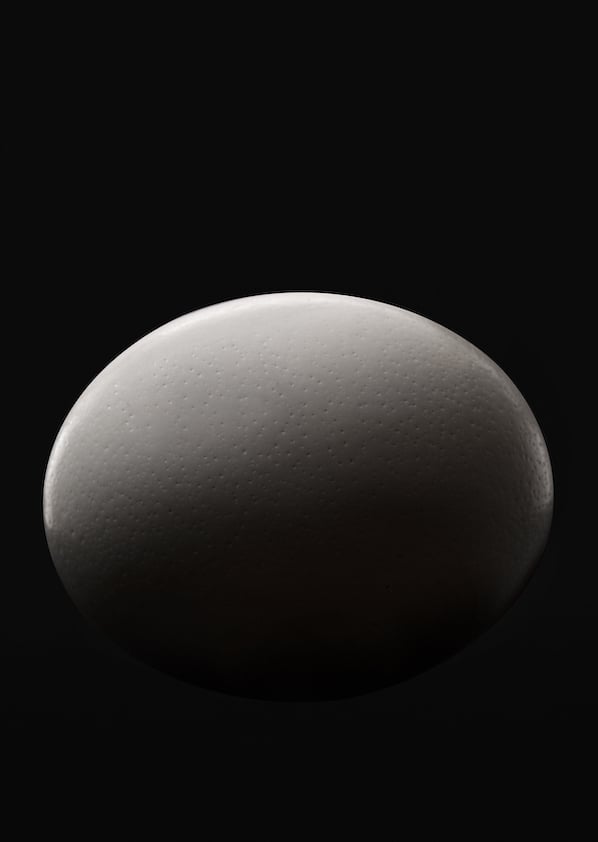
Being awarded the Prix du Jury by les Salons des Beaux Arts is a huge accolade, and you follow in the footsteps of some legendary artists. You started out on your journey as a photographer relatively late – did you expect to get such critical acclaim so quickly, and what tips do you have for young photographers starting out?
I was extremely happy to win the Jury Prize – I did not see it coming!
Regarding starting late: in my view, being an artist goes beyond the medium you choose. So insofar as the technical aspects of shooting are concerned, yes, I started learning it professionally 4 years ago. But when it comes down to the concepts, the research etc., this represents a lifetime’s journey of discovery, research, various studies, interests and readings. To me art is a long process combining the insights of your own inner journey and experiments with various medium and techniques. Interestingly, contemporary photography is currently evolving to a broader art platform: it is no longer just translated in prints but with sculptures, installations and digital mediums, and is no longer confined to classical prints. Prior to photography, I worked as an interior architect and graphic designer, so all of my creative past and journey constitutes what my photography is today and will be in the future. And not limited to the actual print form. As such, it is an evolving, multi-media process fed by my love for light, the arts, life experiences and maturity, education, continuous research in the human form and exploration of the psyche.
Tips for artists starting in photography:
I am unsure if am in the position to advise anyone on a photographic career, but I certainly can share my very personal point of view on the subject. For me, creativity has an important role in society. It can educate, soothe and help people discover a new point of view or a new perspective. It can open conversations and bridge our very humanity. As such, I am not really interested in commercial photography or fashion photography. Despite stunning aesthetics, for me conceptual art and photography always wins as it involves a thorough research based in literature, philosophy, art, science of any given concept and it can impact societal perceptions. The actual development of the concepts is almost more exciting to me than the actual form it is executed on/with. Do not misunderstand me. I LOVE photography and shooting, but as far as I am concerned, any artistic concept can be translated into several different mediums. Hence my love for philosophy, literature and quantum physics is part of an effort to understand what we are made of essentially, and is a very powerful way to unify our humanity. This I guess, is what fine art and conceptual contemporary photography stand for nowadays. Lastly, I would encourage any novice to go for it with no fear of getting it wrong, no fear of people’s reactions (you will always have haters and lovers). Personally, if or when people dislike my pictures, it does not actually affect me, because taste is subjective. I am more concerned with the lack of interest and empathy for our humanity. If you work with passion and dedication, disregarding trends and leaving your ego aside, you will be happy. What is success and happiness but personal fulfilment?
My work concentrates on celebrating the beauty of our very diversity and unifying our very humanity poetically and scientifically.
Les Rencontres d’Arles: -25th September Opening times: Tuesday-Saturday: 10:00-12:30am and 15:00-19:00 Location: Galerie Circa, Arles, France rencontres-arles.com/en


